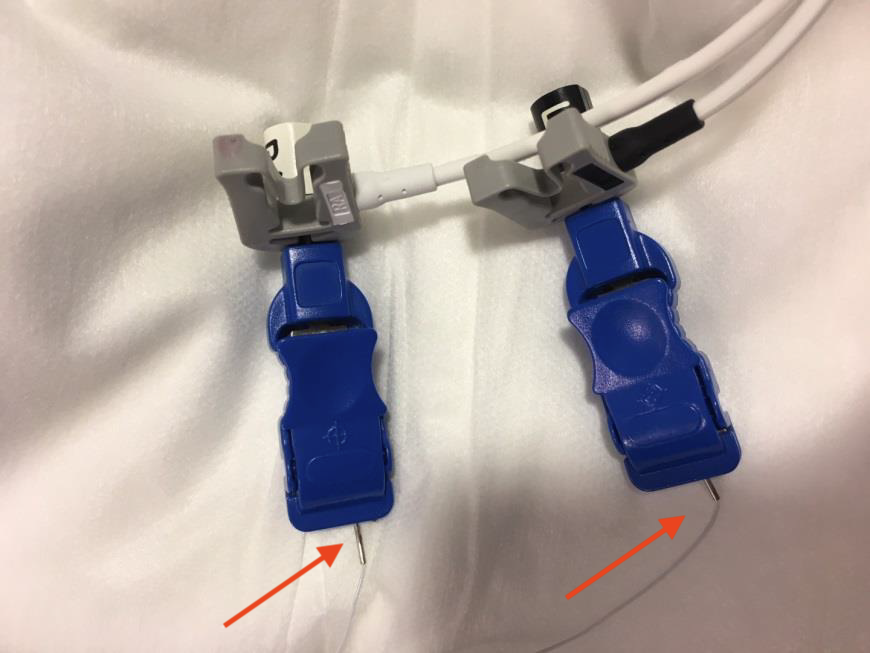Atrial Electrocardiogram
Single-lead ECG performed at the bedside and used to characterise the nature of a tachyarrhythmia when:
- Presence or nature of atrial activity is uncertain
- Atrial epicardial wires are present
- The patient is not dependent on atrial pacing
Equipment
Technique
There are two described techniques, the exact method will vary depending on what equipment is available:


- Attach one atrial wire to the V1 terminal, and monitor lead V1
- Attach both atrial wires to the LA and RA terminal, and monitor lead I
Interpretation
Direct measurement of atrial electrical activity results in a significant increase in amplitude of any atrial activity, such that the largest deflections in the monitored lead will be atrial, assuming atrial activity is present.

References
- Choxi R, Ellenbogen KA, Padala SK. Show Me the P Wave: An Old Tool to Discern Atrioventricular Relationships. Circulation. 2020 Oct 20;142(16):1596–8.
- Waldo AL, MacLean WAH, Cooper TB, Kouchoukos NT, Karp RB. Use of temporarily placed epicardial atrial wire electrodes for the diagnosis and treatment of cardiac arrhythmias following open-heart surgery. The Journal of Thoracic and Cardiovascular Surgery. 1978 Oct;76(4):500–5.